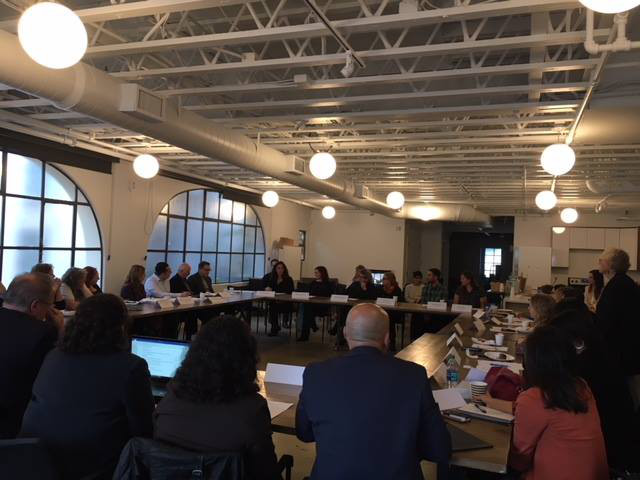Fire Is Bad Business
Economic Forum Searches for Ways to Boost Sales Post-Thomas

Where’s Mitt Romney’s dad when you need him? A $20,000 “loan” could go a long way to solving the immediate financial worries of a number of Santa Barbara businesses trying to make rent; pay their vendors, employees, and bank loans; and find the time to market themselves. The Thomas Fire made December much too lean a month for the county as a whole, and the possibility of low-interest loans or sales tax deferments would do little to help balance sheets already in the red. Most all of the above were part of the conversation at Thursday’s forum organized by Women’s Economic Ventures, at which business owners told state and local officials directly about the fire’s impact.
The word that Santa Barbara’s skies are blue again and that the smoke and ash are gone apparently hasn’t reached the traveling public. Hotels have been hit particularly hard in paradoxical ways, as cancellations that now extend into January — and July in one case — have added to losses generated by the hoteliers themselves, as many kind-heartedly welcomed fire evacuees for free or at a cut rate all across the county.
December was a cruel month, but their counterparts in Ventura suffered much worse, Julia Mayer of the French Press pointed out immediately. She then spoke with such passion about how her coffee shop’s social media posts have supported their fellow retailers that Jesse Torres from the Governor’s Office of Business and Economic Development leaned over to ask her to fill him in on just how they did that.
Among the immediate efforts to boost business — in addition to social media shoutouts — the City of Carpinteria is rallying retailers to encourage them to stay open late for tonight’s 1st Friday, and encouraging the community to attend the 5:30 p.m. tree lighting for the Linden Avenue Hospice tree, a December ceremony cancelled by the fire. They’ll also be thanking the first responders at the Seal Fountain at 6:30, and serving beer, wine, and bands at the Art Center until 10.
In Santa Barbara, the first of eight “cash mobs” will flash up on Saturday. More about that here.
To prep their business community for potential FEMA (Federal Emergency Management Agency) help, Solvang’s Chamber of Commerce staffers were out walking the town last week, distributing practical information on how to document fire losses (available at the chamber’s website, solvangcc.com). “Power was out all day December 13,” Tracy Beard, the executive director, recalled, “and everyone’s had to clean up ash. There are businesses like pest control who couldn’t get to their customers for two weeks,” she said, “or the Culligan man in Montecito. This has affected the whole county.” FEMA can take two to three months to come through, she said, and people need to document now, not later.
Jesse Torres from the state explained, based on his recent experience in Northern California, that if FEMA is called, the Small Business Administration (SBA) would fund a state emergency loan program. “Additional debt financing is not what we want,” one business owner answered. Another explained she’d tried to refinance her existing SBA loan but was denied because of December’s red ink.
The Thomas Fire could not have come at a worse time. For C’est Cheese, a trio of retail, catering, and café businesses run by Kathryn and Michael Graham, the café could have broken their backs if they’d kept it open. Still in anguish over having to lay off her café staff two weeks before Christmas, Kathryn Graham told the meeting participants that December normally put them in the black for the year and carried them through the lean winter months. A $20,000 catering order that had been postponed but was then cancelled was the final straw.
The French Press’s Julia Mayer was undaunted. “We’re going to work our asses off,” she vowed. “I’m not afraid of this, and we’re going to get through it.”
A lack of information or a central place to get information is frustrating Santa Barbara’s situation, Marsha Bailey, the founder of Women’s Economic Ventures, said after the meeting. “Ventura and San Luis Obispo have an economic development infrastructure, but Santa Barbara does not,” she said. The travel and business groups are focused on pieces of the puzzle, Bailey explained, increasing visitors or sending insurance information, but no single organizer exists to pull all the pieces together.
The brainstorming session — which suggested continuing the Downtown Organization’s “Shop Local” promotion and perhaps creating an “I ♡ Santa Barbara” campaign around February’s Valentine’s Day —rapidly came down to brass tacks when the city permit process came up. Bitter comments were made about the years-long and torturous process of getting permits to simply open the doors. The expense and delay were bad enough, but when Thomas hit, “We were screwed,” one participant said.
At that, Lillian Conroe, also from the Governor’s Office, advised bringing the planning supervisor into the meeting. “Get them to the table,” she said. Later, she asked why empty storefronts didn’t have university classes in them. “You’ve got a university here, don’t you?” she asked. “We’ve done that in Los Angeles,” she said. “They’re always looking for classroom space. If your landlords won’t cooperate, get them to the table!”
Getting decision makers to the same table as business people is the task of an upcoming “Hackathon” at which one problem at a time will be hashed out to speed up the permitting process. They’d be wise to have Conroe come mediate.


